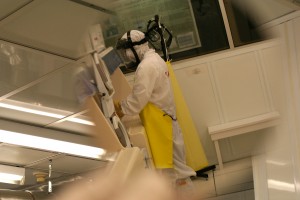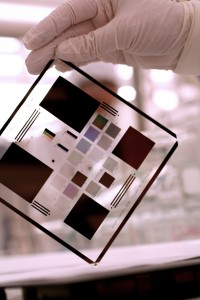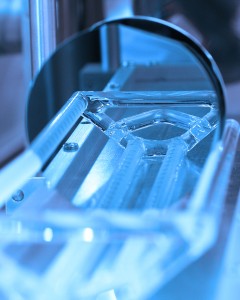Electron Backscatter Diffraction (EBSD) is a well-established technique for crystallographic analysis in SEMs. The Zeiss Sigma FESEM at the nanoFAB, which is equipped with a standard Oxford EBSD detector (s-EBSD), has been utilized widely for different application areas, such as metallurgical and mineralogical materials characterization. The s-EBSD configuration is designed for bulk sample analysis, and the major limitation is the achievable ultimate spatial resolution due to the broad interaction volume of electrons in bulk samples.
The nanoFAB is pleased to announce that the transmission mode EBSD (t-EBSD) has been commissioned and available for thin film sample analysis with the advantage of higher spatial resolution, which can potentially provide images and detailed quantitative orientation data comparable with or better than diffraction data obtained by TEM’s.
- t-EBSD setup in the Zeiss Sigma FESEM
In s-EBSD, the bulk sample is tilted at 70 degrees towards the EBSD detector with a relatively long working distance (10-20 mm), while the thin specimen is tilted at 20 degrees in the opposite direction with a smaller working distance (in the range of 2-5 mm) in t-EBSD configuration.
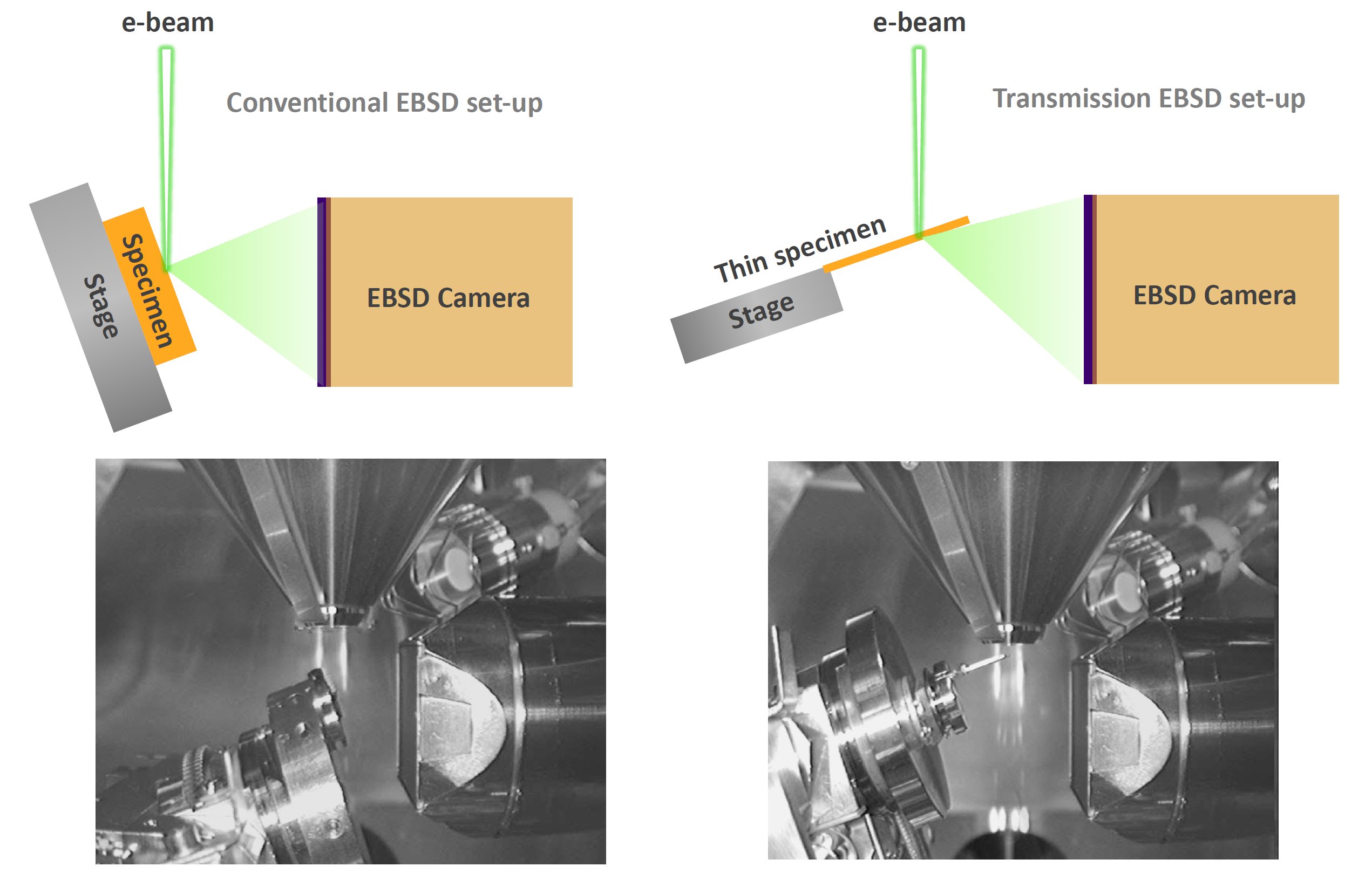
- t-EBSD diffraction pattern
Specimen composition/thickness and accelerating voltage of the primary electron beam have strong effects on the quality of transmission EBSD patterns and orientation maps. Below are an EBSD pattern and indexed bands, acquired from a 50nm Au film with 28kV electron beam.
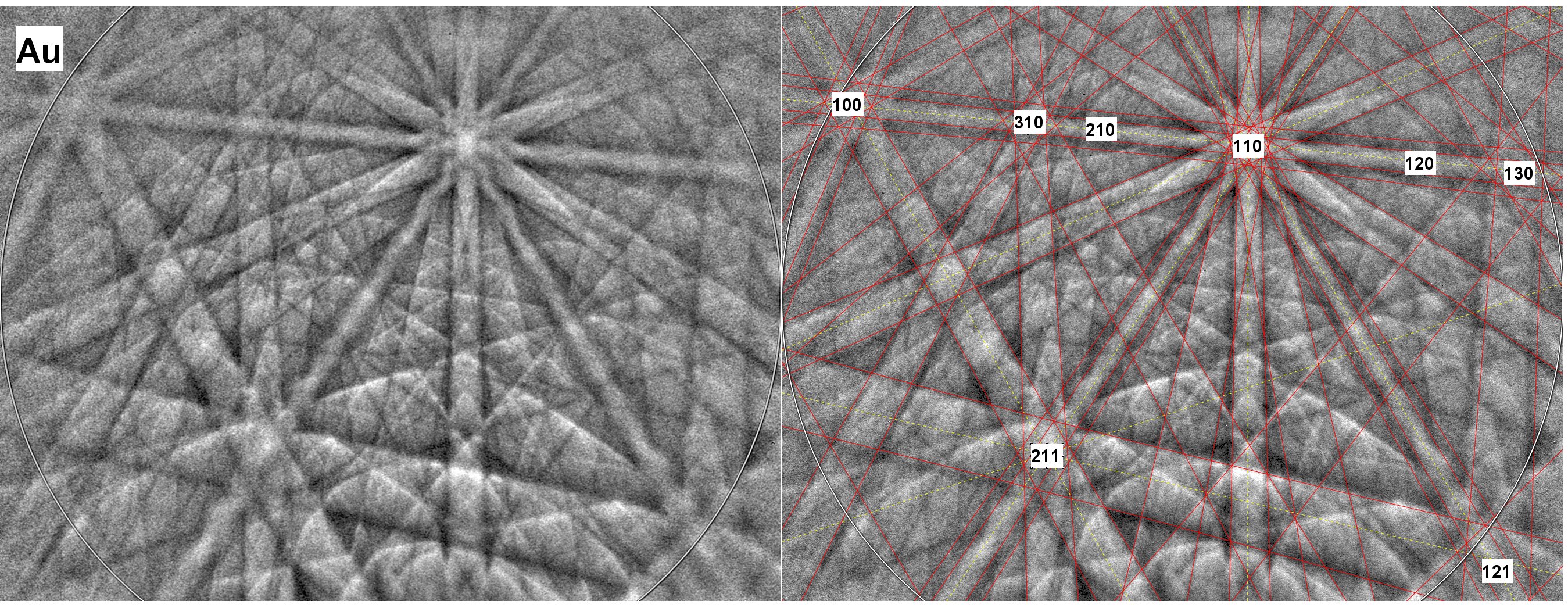
- Spatial resolution
One of the biggest advantages of t-EBSD is the high spatial resolution. Below shows EBSD orientation (Euler) maps acquired from discrete Au particles deposited on a SiN window. Grains less than 20nm can be clearly resolved.
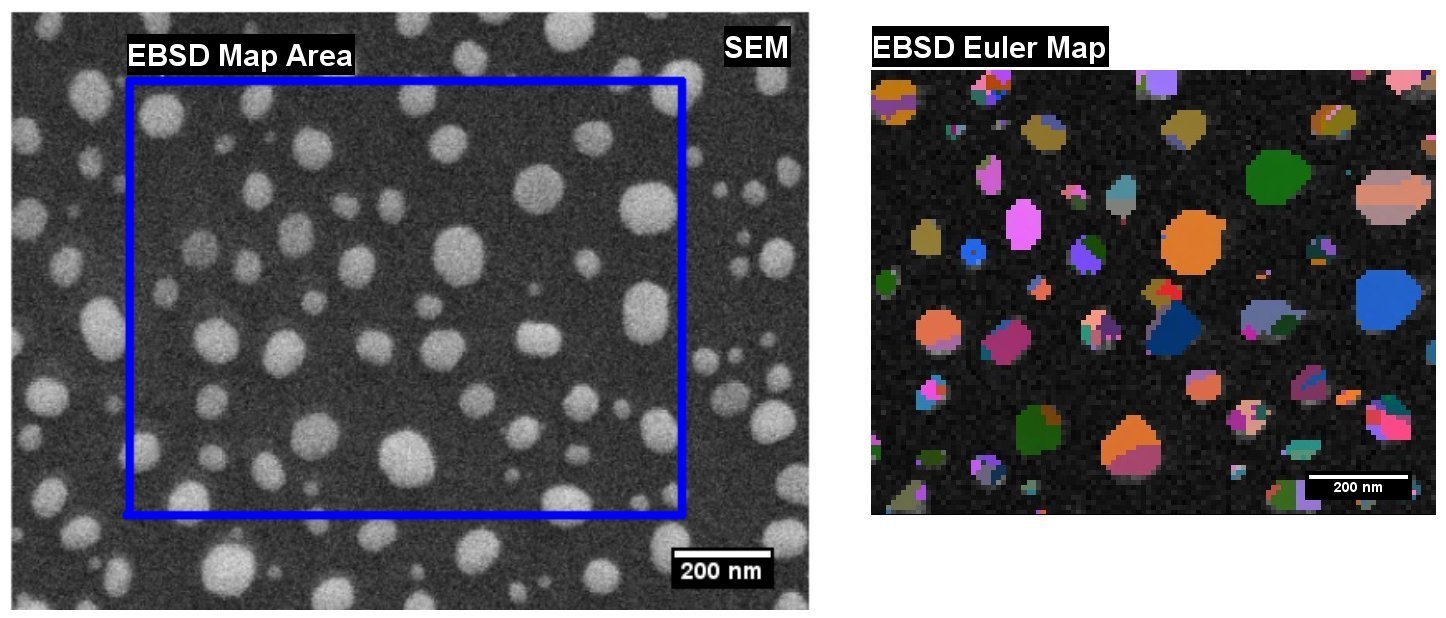
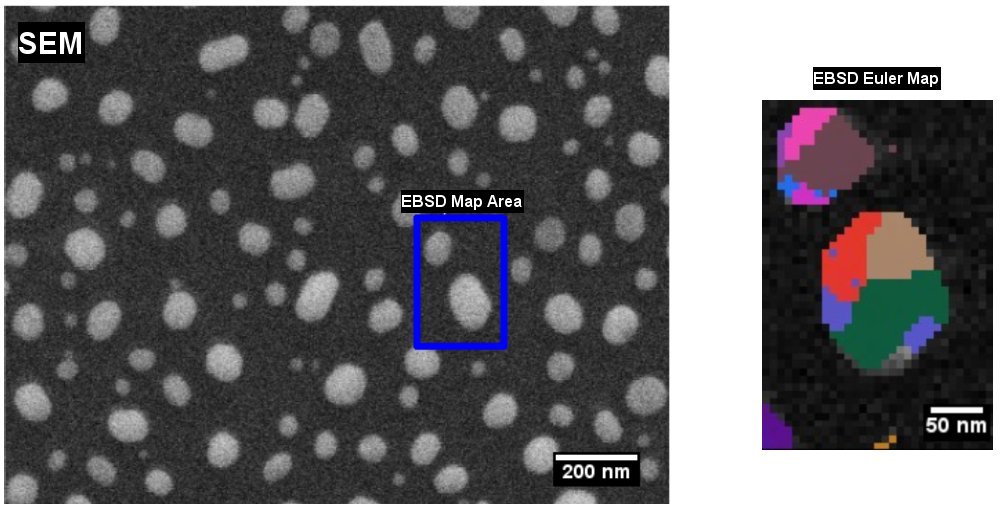
- t-EBSD analysis of Au films
t-EBSD analysis (Orientation maps, Euler maps, Grain Size Distribution and Orientation Preference) are performed from 50nm thick (as deposited and annealed) Au films, in comparison with SEM and S/TEM data.
- as-deposited Au film


- Au film annealed at 500 C


- Both as-deposited and annealed films have a preferred (111) orientation in Z direction (normal to the film), while grain sizes are much bigger in the annealed film.
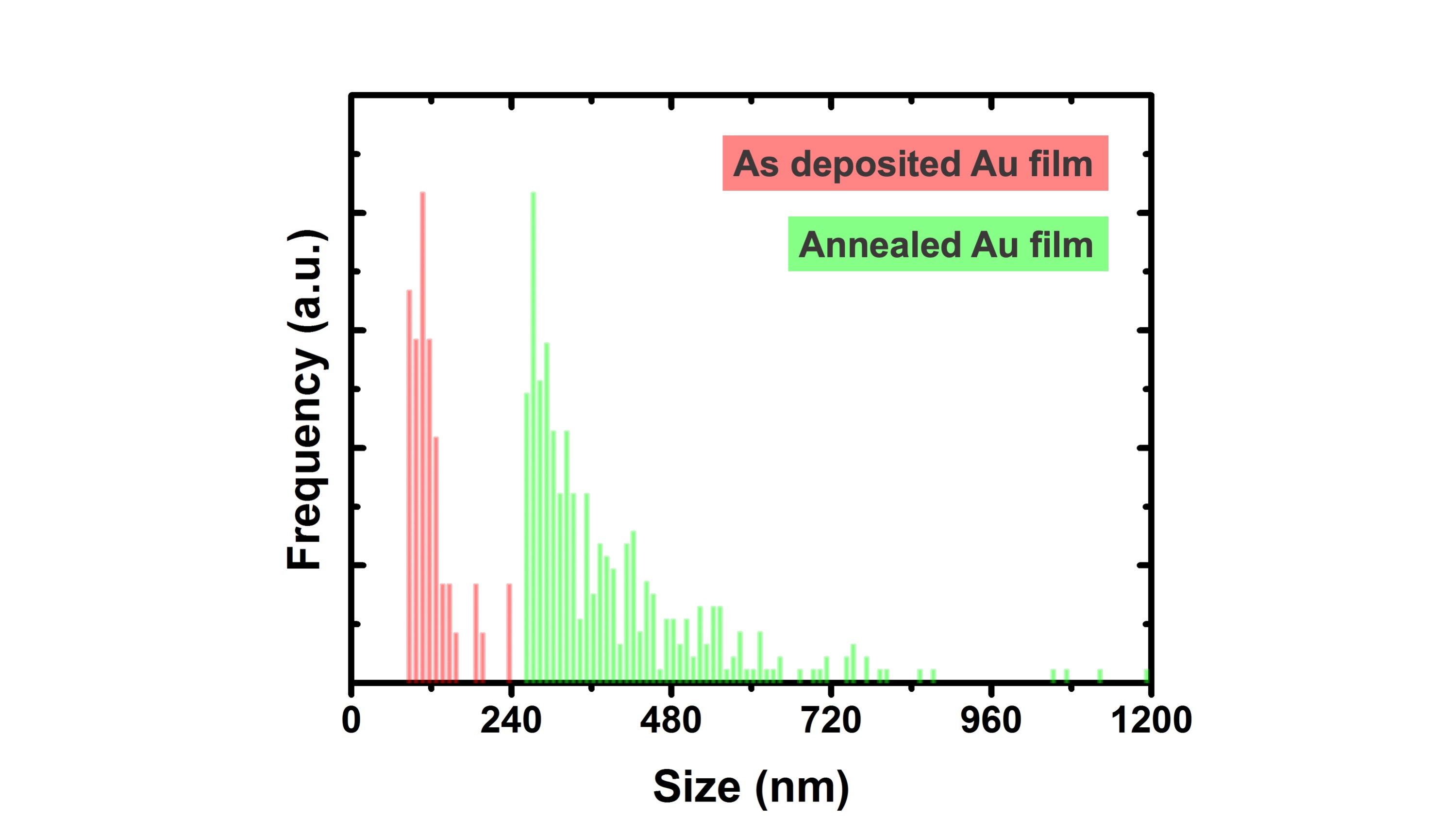
Please submit a request on LMACS if you are interested in t-EBSD analysis of your samples. If you have any questions, please feel free to contact Dr. Emmett Yu (hy1@ualberta.ca) or the Characterization Group Manager, Peng Li (Peng.Li@ualberta.ca).


